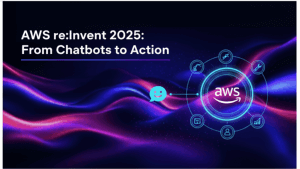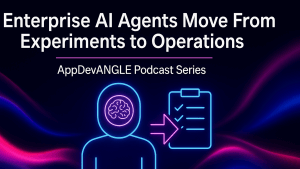Shortcut’s recent announcement of Korey, an AI product manager designed to orchestrate software development workflows, marks a notable shift in how engineering and product teams may structure their work. Positioned as more than a productivity add-on, Korey is intended to act as a workflow orchestrator that generates specifications, breaks down tasks, and coordinates execution across teams.
For IT decision makers evaluating the role of AI in product delivery, Korey’s launch signals the accelerating trend of embedding intelligent agents directly into the software development lifecycle.
What Korey Brings to the Table
Shortcut frames Korey as a full-fledged product team member rather than just another project management utility. Its feature set reflects that positioning:
- Instant specs and tasks – Translate ideas into structured specifications with acceptance criteria and task breakdowns.
- Real-time visibility – Provide continuous updates on project health, blockers, and dependencies.
- Sprint and workflow management – Support task prioritization, sprint planning, and workflow adjustments.
- Contextual integration – Draw from GitHub Issues, Shortcut, and comments to generate accurate plans.
- Coordinated work assignment – Match tasks with engineers, designers, or AI agents.
- Personalized assistance – Adapt to each team’s style and preferred formats.
The vision: reduce friction in planning, minimize meeting overhead, and let developers focus on execution.
Analyst Perspective on AI Product Managers
We see Korey as an inflection point in the industry, where AI is moving from the periphery of developer tools into the heart of workflow orchestration. This evolution extends well beyond copilots and chat-based assistants. Instead of suggesting code snippets or answering queries, agents like Korey are taking responsibility for scoping requirements, structuring tasks, and coordinating execution across teams.
- AI embedded in workflows – The trend is moving beyond copilots and chat interfaces toward agents with responsibility for scoping and coordination.
- Reducing human bottlenecks – Manual activities like backlog grooming, requirements definition, and dependency tracking often slow delivery. AI can absorb much of this repetitive overhead.
- Shift toward orchestration, not just automation – Tools like Korey don’t just automate steps; they orchestrate across systems, integrating context to keep projects aligned.
The result is a shift from AI as an assistant to AI as an accountable participant in the product development process.
Benefits for IT Decision Makers
Developers and decision makers often struggle with balancing speed, quality, and alignment, and Korey’s design aims to address each of these dimensions in meaningful ways. By accelerating delivery, the platform helps teams move from idea to execution with fewer planning delays. At the same time, it improves requirements quality by generating consistent specifications with clear acceptance criteria and documentation, reducing ambiguity across teams. Korey also enhances situational awareness by providing real-time dashboards that limit the need for manual status checks and reporting. For larger organizations, the system’s ability to harmonize distributed work enables scalable team coordination without relying solely on human oversight.
Tatango’s CTO cited a 37% boost in engineering velocity after adopting Korey to streamline scoping and specification clarity. While outcomes will naturally vary depending on maturity and process, this example illustrates the measurable impact AI orchestration could deliver when integrated effectively.
Challenges and Considerations
While Korey and tools like it offer upside, IT decision makers should weigh important considerations:
- Integration depth – Current integration is limited to GitHub Issues and Shortcut. Broader ecosystem connectivity will be essential for multi-tool enterprises.
- Governance and trust – Allowing AI to generate and prioritize tasks raises questions about oversight, accuracy, and accountability.
- Change management – Shifting planning responsibilities to an AI agent requires cultural acceptance from developers, product owners, and stakeholders.
- Context limits – AI can surface dependencies and blockers but may struggle with nuanced business priorities or tradeoffs that require human judgment.
AI adoption in product management will likely follow a layered adoption curve, where automation of repetitive steps precedes broader delegation of strategic responsibilities.
AI in the Coordination Layer
The introduction of Korey is part of a wider pattern theCUBE Research is tracking:
- AI-native workflows are gaining traction – Engineering leaders are experimenting with AI agents embedded into developer pipelines.
- Coordination is becoming a key AI target – While AI has been applied heavily to coding (via copilots) and operations (via AIOps), coordination and planning represent the next logical frontier.
- Vendors are differentiating at the workflow layer – Product management platforms, observability vendors, and DevOps toolchains are racing to integrate AI orchestration features.
The move underscores a strategic shift: AI will not just accelerate existing processes, but reshape who (or what) performs coordination roles within product teams.
Learn more by trying for yourself at https://korey.ai.

Our Take on What to Watch
For IT decision makers, several focal points stand out as AI-driven orchestration becomes more mainstream. First, the rapid rise of AI-native orchestration platforms will attract both new entrants and established vendors, each aiming to provide agentic capabilities that manage entire workflows end-to-end. Second, governance frameworks will be essential, as enterprises need clear policies for reviewing AI-generated plans, tasks, and dependencies before they reach execution. Finally, impact measurement will determine the success of these systems. Evaluating AI purely on speed is not enough; enterprises must also measure its effect on predictability, quality, and developer satisfaction.
Taken together, these considerations will determine whether AI-driven orchestration evolves into a core component of enterprise software delivery or remains a niche experiment within a handful of forward-leaning organizations.
A New Role in the Development Lifecycle
Korey’s introduction highlights the emergence of AI product managers as orchestrators of software workflows. While early in its integration breadth, the product points to a future where AI plays a central role in eliminating planning bottlenecks and aligning execution with business priorities.
For IT decision makers, the key takeaway is clear: the coordination layer of software development is being redefined. As AI moves from code generation and operations monitoring into planning and orchestration, organizations must prepare governance, cultural, and technical foundations to capture the benefits, while ensuring oversight and trust remain intact.



